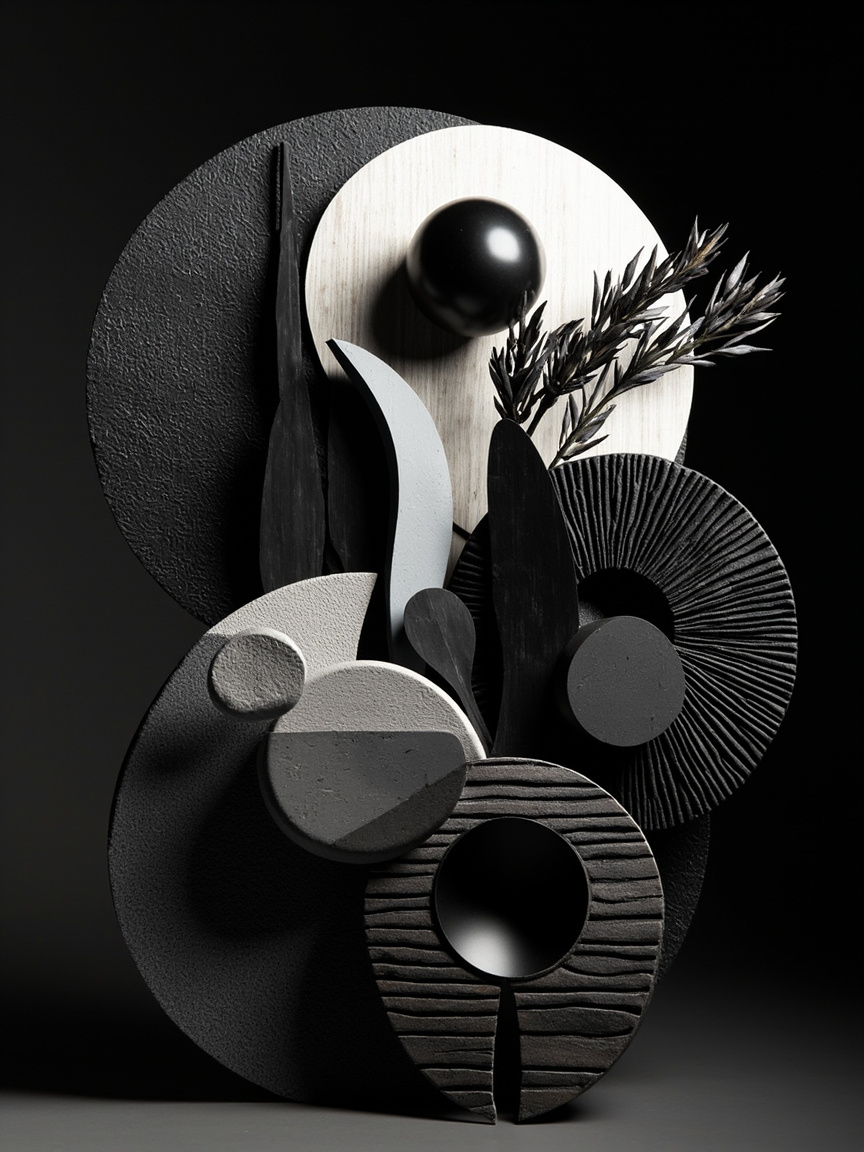The Ultimate Guide to Afrohemian Black & White Design | Chic, Earthy & Bold!
- Malaceo Ivey
- Oct 15
- 3 min read
Updated: Oct 26

Afrohemian design—an evocative blend of African heritage and Bohemian free-spiritedness—has always been rich in color, texture, and storytelling. But when reimagined through a black-and-white lens, something transformative happens. The vibrancy shifts from hue to depth. Pattern and form take center stage. What was once bold and earthy becomes elegant, mysterious, and deeply introspective.
A black-and-white Afrohemian palette captures the essence of duality—heritage and modernity, softness and strength, tradition and rebellion. It’s minimalism infused with soul.
Use the links (pictures) below to design your space.
I make a small commission for your purchases. Thank you for your support.
1. The Philosophy Behind Monochrome Afrohemian
At its core, the Afrohemian aesthetic celebrates individuality and cultural pride. It’s about crafting a space that feels collected, soulful, and lived-in—each object carrying a story.But when stripped of color, Afrohemian style finds a new kind of power. Black represents grounding, resilience, and protection—a color deeply rooted in African spirituality. White symbolizes clarity, purity, and divine connection. Together, they form a visual rhythm reminiscent of African mud cloths, tribal tattoos, and ceremonial patterns that have existed for centuries.
This duality allows for serenity without losing strength—a bold statement that whispers rather than shouts
2. Key Elements of the Black-and-White Afrohemian Space
Textiles That Speak
Think handwoven throws, black mud cloth pillows, and embroidered cushions with geometric or tribal motifs. In monochrome, these textiles emphasize linework, craftsmanship, and symmetry. Layering becomes essential—cotton, linen, wool, and raffia all add warmth to the muted palette.
Art and Symbolism
Afrocentric wall art in grayscale tones—photography, portraits, and abstract tribal patterns—can transform plain walls into cultural statements. Consider black-and-white images of African landscapes, expressive faces, or minimalist line drawings inspired by ancestral symbols.
Sculptural Contrast
Black clay pottery, carved wood sculptures, and matte ceramics bring sculptural weight to the room. These dark objects paired against crisp white walls or soft neutral backgrounds create a gallery-like atmosphere that feels both sacred and modern.
Texture Is the New Color
Without vibrant tones, the richness of Afrohemian style emerges through texture. Think of sisal rugs, rough plaster walls, woven baskets, and glossy ebony furniture juxtaposed with sheer white curtains. This tactile interplay creates warmth and visual interest while keeping the palette refined.
3. Lighting the Mood
In dark-toned Afrohemian interiors, lighting becomes essential. Opt for warm, low lighting—woven pendant lamps, candles, or lanterns that cast dramatic shadows. This not only softens the monochrome edges but also brings intimacy and rhythm to the space.
Brass and gold accents work beautifully here, adding a whisper of luxury without breaking the moody aesthetic.
4. The Afrohemian Soul of Minimalism
A black-and-white Afrohemian home is never sterile. It’s soulful minimalism—spaces that breathe with intention. Instead of clutter, there’s curation. Instead of noise, there’s narrative.
Each piece should carry meaning: an heirloom basket from Ghana, a hand-carved stool from Nigeria, or a contemporary art print from a Black artist in the diaspora. These objects become spiritual anchors, tying the space to both ancestry and modern identity.
5. Styling Ideas for a Dark Afrohemian Look
Walls: Try charcoal gray, deep matte black, or limewashed white with texture.
Furniture: Mix low-profile modern pieces with handcrafted African design—like a carved console table or a cane-backed chair.
Decor: Add monochrome woven baskets, ceramic vases, or black metal accents.
Fabrics: Layer black mud cloth over white bedding or vice versa for contrast.
Plants: Use dark-leafed greenery—like rubber plants or black elephant ears—to soften the palette while keeping the moody tone.
Conclusion: The Beauty of Shadow and Light
Afrohemian design in a dark monochrome palette is not just a style—it’s a mood, a statement, a meditation. It reclaims black as a color of elegance and power, blending cultural roots with contemporary artistry.
In these spaces, beauty lives in contrast. Every line, pattern, and texture tells a story. The absence of color reveals a deeper narrative—a reflection of balance, identity, and quiet strength.

















Comments